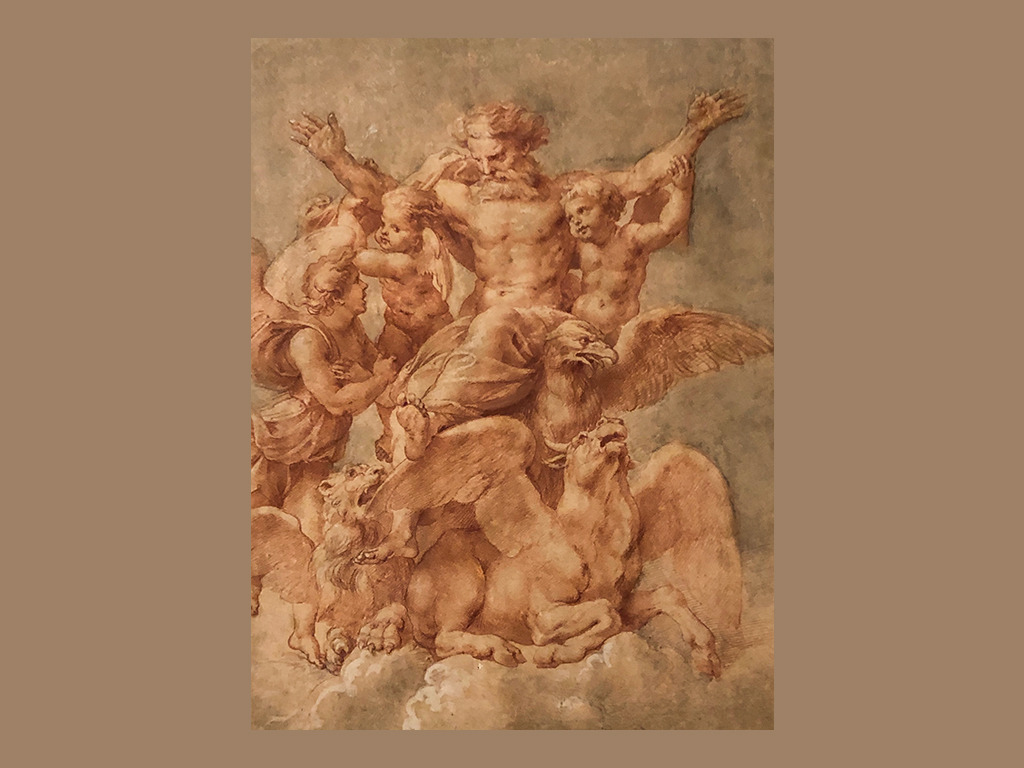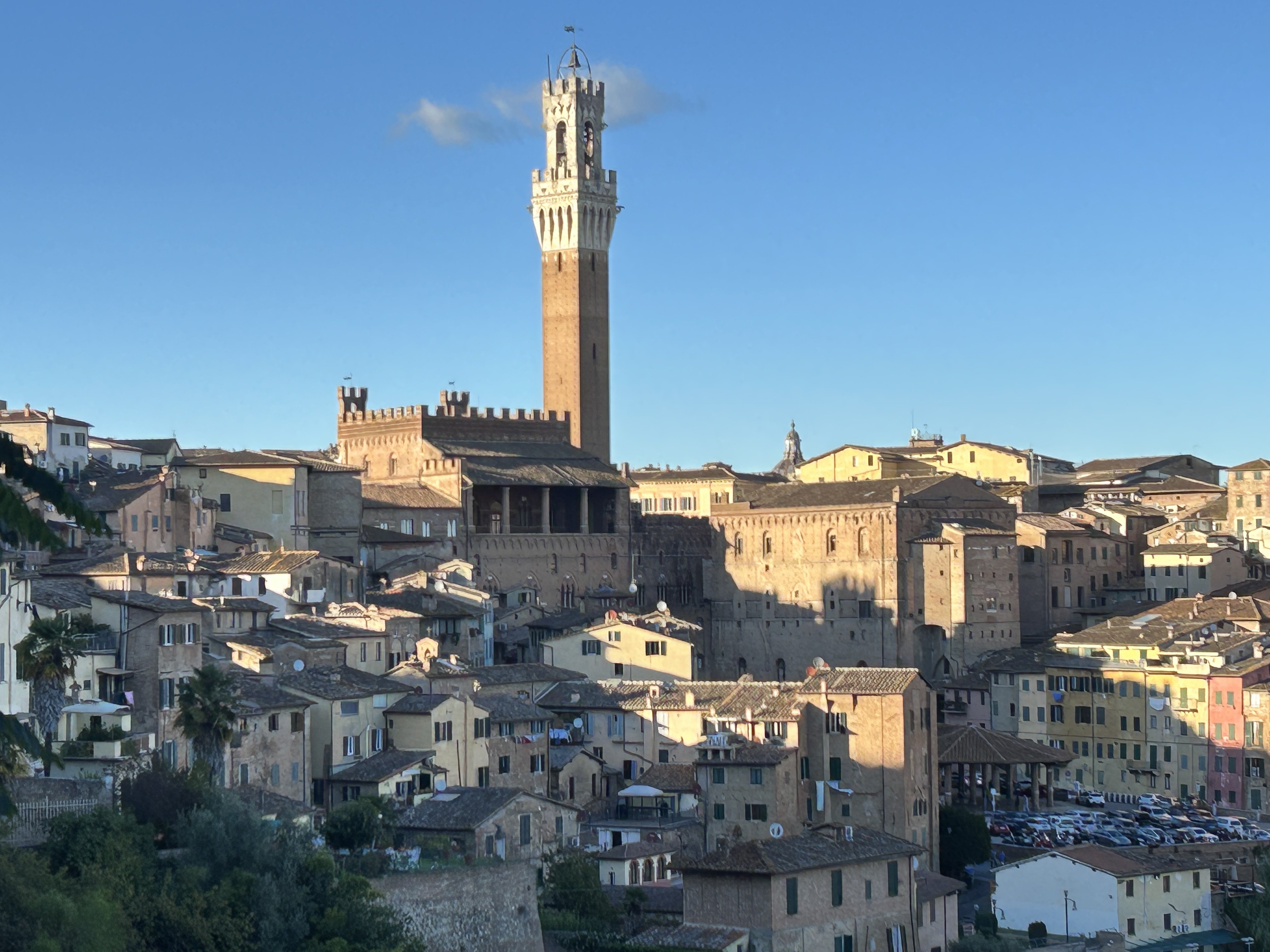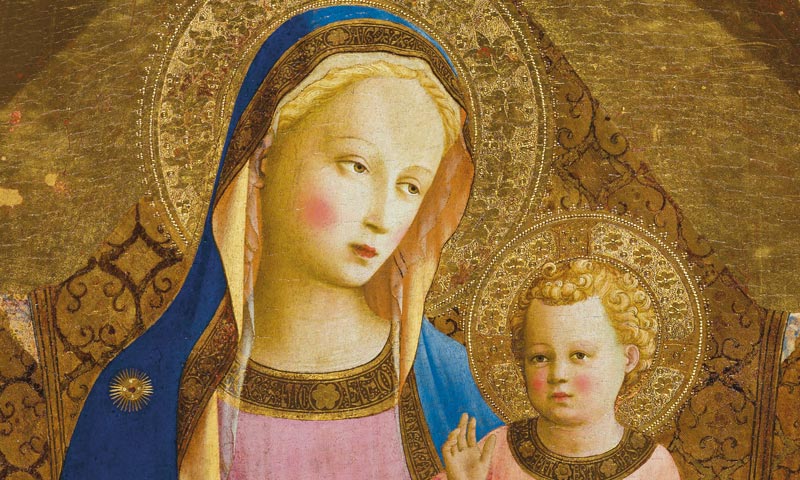Perhaps understandably Raphael would have
worn a face mask to cope with the foul smells on the streets of Renaissance
Italy. It was in keeping then, that Val and I should cover our noses and mouths
when we ventured to Rome on a hot summers day to marvel at his artistic
achievements on the 500th anniversary of his death.
Self portrait of the artist 1504-1506
We took the train from our house in Tuscany.
Like every other traveler we had to wear a facemask as Italy tries to bring the
Covid-19 virus to heel. This is required by law on stations, on the trains, in
bars and in the Scuderie del Quirinale museum, the venue for a
once-in-a-lifetime exhibition of Raphael’s work.
We had thought long and hard about leaving
our little casa and Val’s studio in the hills above Cortona. There had
been no cases of the pandemic in the Cortona comune for over a month and
only one person had died there since the start of the outbreak five months ago.
Few people were travelling to Rome from
Cortona station. The doors of every carriage had been re-badged either ‘entry
only’ or ‘exit only’. Hand sanitisers were available for use inside the entry
doors and every other seat was flagged with a ‘No Sitting’ sign to ensure
social distancing. Everyone followed the rules.
On our journey of just over 2 hours we
consulted a local man about Raffaello Sanzio, better known as Raphael. He was
Giorgio Vasari, an important 16th-century painter, architect and chronicler from
nearby Arezzo. Vasari’s book, Lives of the Most Excellent Painters,
Sculptors and Architects, is the best source of information on Renaissance
artists. Despite the fact that it was written in the 1500's, it is an easy and
engaging read packed with facts, attributions, and entertaining anecdotes about
the great artists of the Renaissance.
By the time Raphael died unexpectedly at the
age of 37, he was already one of the most celebrated artists on the Italian
peninsula. The news of his death on Good Friday, 1520, drew mourners from far
and wide to his shrine at the Pantheon in Rome.
We arrived at lunchtime at Rome’s Termini
station and found a normally busy and bustling city with little on the roads and
very few people, largely wearing face masks, in the street. Our destination was
a twenty-minute walk away, an historic building in the shadow of the Quirinale
Palace built in 1583 by Pope Gregory XIII as a papal summer residence.
Raphael was born in Urbino on 6 April, 1483
to the artist and court painter Giovanni Santi and his wife Màgia di Battista
di Nicola Ciarla. When he was eight years old, his mother and infant sister
died in childbirth. His father’s subsequent death left him alone at 11 years
old.
Raphael was placed in the care of his uncles and
was apprenticed to the painter Pietro Perugino in Perugia. He worked on large
collaborative projects, such as altarpieces both there and in Città di
Castello, near where we live. Within a few years, Raphael had begun to earn
commissions around the ducal court of Urbino.
Raphael’s early portraits and his religious
paintings during this era show a heavy reliance on the teachings of his father,
of Perugino, and of other regional masters. At the same time, when we looked at
some of these early works in the exhibition, it’s clear that Raphael’s talent
would soon take him beyond his idyllic, isolated hometown.
Traveling on muleback to Florence in 1504,
the ambitious 21-year-old Raphael carried just a sketchbook and a letter of
introduction. A small fish in a pond of Michelangelos and da Vincis, the young
artist rose to the challenge to prove his skill and he secured several notable
Florentine commissions. Ultimately, the connections he made would take him to
Rome. There, in the papal city, he would find not only artistic success and
adoration from patrons, friends, and fellow artists. He would also find love.
La Fornarina. Portrait of Margherita Luti, said to be the artist's great love
Vision of Ezekiel 1516-1518 (retouched by Peter Paul Rubens)
Study for the Parnassus fresco. Head of the muse Thalia c.1509-1510
Detail from portrait of Leo X with two Cardinals 1517-1519
The Raphael exhibition in Rome opened to the
public just three days before the Covid-19 lockdown in Italy forced its
closure. When we heard it would re-open in June but only continue to 30 August,
we knew we had to brave the crowds and chance travelling by train to see it.
As it was, we need not have worried. We could
only book tickets in advance and online. This system requires you to select a
time when a maximum of 10 people are allowed into the exhibition — and
latecomers are not admitted.
Upon arrival at the Scuderie del Quirinale
gallery, their staff checked our tickets, instructed us to wipe our shoes on a
specially disinfected mat, stand in front of a camera to have our photo taken
and then have our temperatures taken by a machine. From there we were directed
to a holding area where Val and I, and eight other ticket holders, had to stand
in individual circles painted on the floor to ensure social distancing.
A new group of 10 visitors are allowed to
make their way through the show every five minutes. A chaperone came and
collected us and stayed with us throughout the duration of our visit to ensure
only one group were in each of the rooms of the exhibition at any one time.
The system worked well but we could have
spent longer than the 80 minutes that we had been allotted for our visit.
The Curators Twist
Most exhibitions are curated chronologically but
this one starts by reminding the visitor about Raphael’s reputation at the time
of his unexpected death, when the artist was still in his prime and enjoying
A-list status. It then traces his artistic development in reverse, ending with
his early years in Urbino.
The show proved to be a unique experience,
with more than 200 works on display, including 120 by Raphael. Of these the
drawings are a revelation, many loaned by the Queen and the Ashmolean in
Oxford, as was the room devoted to the tapestries he produced for the Vatican.
For centuries, Raphael’s art was idealised as
the epitome of perfection, inspiring generations of artists, but the curators
have also fleshed out the role the artist played in the Rome of Pope Leo X
(1513-1521). This is when Raphael turned his mind to architecture, archaeology
and antiquarian studies in service of the grand project of reconstructing and
preserving the ancient city. It was then his star shone brightest.
The ten tapestries he created under Leo X to
decorate the walls of the Sistine Chapel made his classical, religious style
celebrated across the world. These are rarely taken out of storage so to come
face-to-face with one of them, ‘The Sacrifice at Lystra.’ was a privilege.
Raphael didn’t live long enough to see the
tapestries in situ, but for one week before lockdown, a few lucky people were
able to see all 10 tapestries exhibited in the Sistine Chapel as part of the
Vatican Museums’ homage to the artist.
Raphael had plenty of hands-on experience
with the classical. In 1515, Leo X commissioned him to conserve the ancient
marbles and inscriptions in Rome, making the artist the first appointed
caretaker of ancient art, a position that over the centuries evolved into
Italy’s multifaceted artistic heritage administration of today. On display is
one of the drafts of a now famous letter to Leo X written by Raphael and his
friend Baldassare Castiglione, in 1519, about the need to protect and preserve
Rome’s ancient monuments.
Raphael’s famous portrait of Castiglione as a
well as a portrait of Leo X with Cardinals Giulio de’ Medici and Luigi de’
Rossi, on loan from the Uffizi Galleries in Florence, greet you at the start of
the exhibition. This latter painting caused a storm in Italy just before the
exhibition opened after the Uffizi’s scientific committee resigned en masse in
protest. The portrait, they said, was one of 23 works that should never leave
their care because they were part of the identity of the gallery’s collection and
as much a part of the fabric of Florence as the duomo.
The rivalry between Florence and Rome never
stops!
Before taking the train back to Cortona we went
for a coffee at a bar that is normally a regular haunt of the people who work
in various commercial and government offices between Palazzo del Quirinale, the
official resident of the President of the Italian Republic, and Rome Termini
station.
The owner told us Rome had been a ghost town
since March. His monthly takings in June last year were around 10,000 euros,
this year just 700. ‘Everyone is working from home’ he told us adding ‘I don’t
see people returning to their offices for very many months, if at all.’
Safer for Now
Italy was the first European nation to be
engulfed by coronavirus, but as the prospect of another lockdown looms in some
of its neighbours, the country has managed to avoid a resurgence of infections.
Contact tracing and compliance with safety measures have helped Italy achieve a
stable, low rate of new Covid-19 infections but the situation beyond its
borders is one of the reasons that prime minister, Giuseppe Conti, has just
extended the country’s state of emergency until October. This means he will
continue to have the power to impose a lockdown and other safety measures
without needing the approval of parliament.
Despite gatherings outside bars and crowded
beaches, for the most part physical distancing and the wearing of face masks
have been widely observed. Regional leaders have acted swiftly against those
who don’t comply. In Campania, people caught without a mask in enclosed spaces
risk 1,000 euro fines, while those who flout quarantine rules in Veneto face
hefty fines or jail.
This said, last Friday night our local town
Cortona was fuller than we have seen it in recent months, mainly with teenagers
and other young people not respecting social distancing. None of them were
wearing face masks, which they are not obliged to do outdoors, but many older
people were.
On 4 May, when Italy began easing lockdown
restrictions, more than 1,200 new cases were reported in a day. Since 1 July,
the daily increase has been relatively static, reaching a high of 306 on 23
July, then falling but, worryingly, rising again to 295 on 1 August. Several
coronavirus clusters have emerged across the country, mostly due to infections
imported from abroad.
Italians take their health very seriously.
International data for mask wearers indicates that 90 per cent of people in
Italy wear one, among the highest in the world. Italian officials say this
helps.
Fabrizio Pregliasco, a virologist at the
University of Milan, has been widely reported here saying Italy was in a ‘state
of limbo’ and that perhaps the stability has simply been down to some good
luck.
‘For now things are going well, but we are
walking a fine line,’ he has warned. ‘This stable situation could either end
badly or carry on the same, but that would depend on two things: the continued
capacity to identify clusters and the behaviour of the majority of Italians. In
the absence of specific therapies or a vaccine, quarantine, distancing and
identification of asymptomatic carriers remain the only measures to control the
epidemic.’
Leonardo da Vinci lived to be 67, Michelangelo
to 88.
We left the Raphael exhibition wondering how
his style would have developed if he had lived longer. What would have resulted
if he had been released from the deadening strictures of the subject matter imposed
by the papacy? What architectural projects would he have created and
championed? What other frescoes would he have produced, and what other
insightful portraits would he have painted? We can only dream.
At a time when the corona virus has cast
uncertainty over the world Raphael’s untimely death at 37 acted as a sobering memento
mori.









